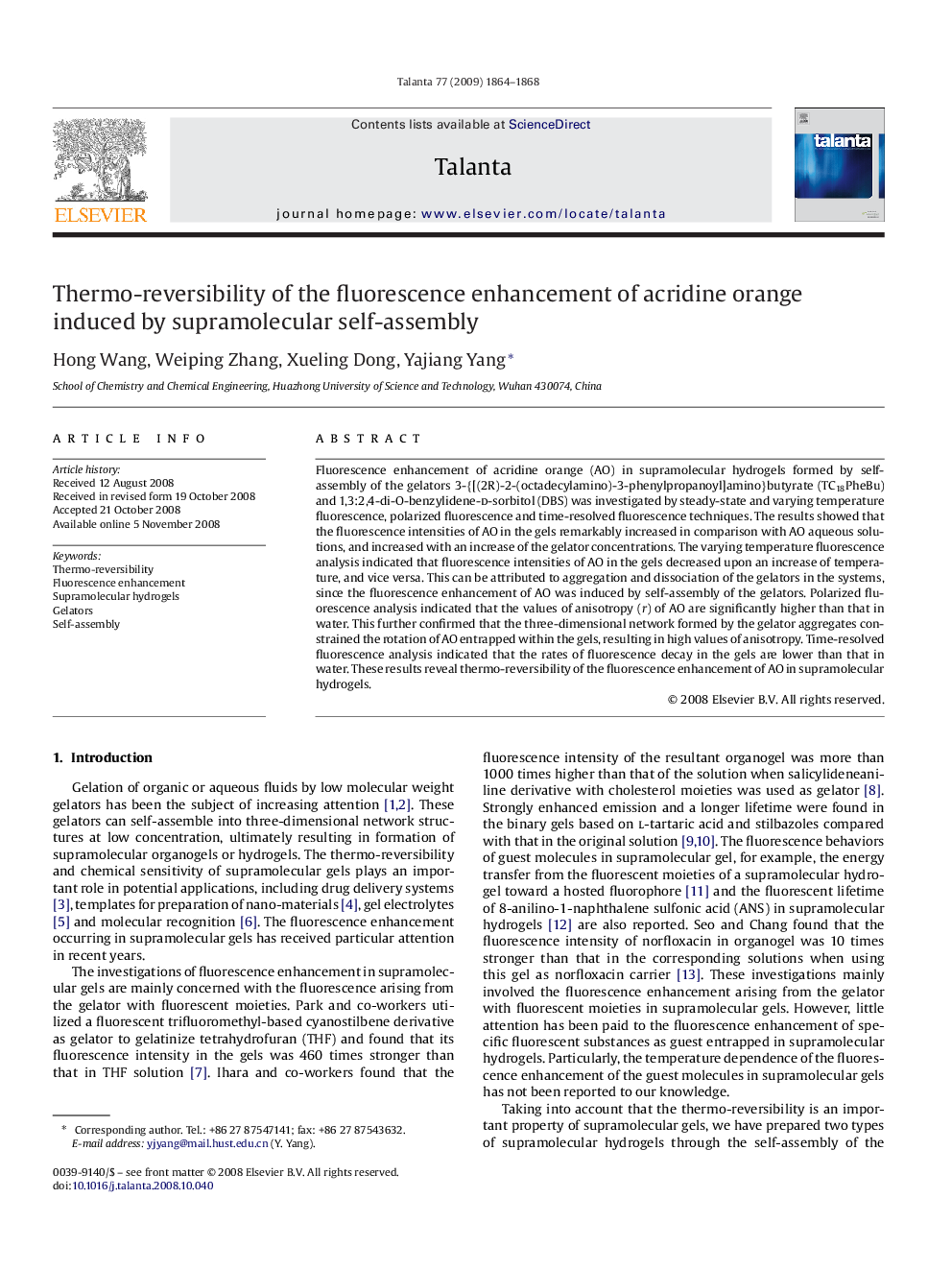| Article ID | Journal | Published Year | Pages | File Type |
|---|---|---|---|---|
| 1245252 | Talanta | 2009 | 5 Pages |
Fluorescence enhancement of acridine orange (AO) in supramolecular hydrogels formed by self-assembly of the gelators 3-{[(2R)-2-(octadecylamino)-3-phenylpropanoyl]amino}butyrate (TC18PheBu) and 1,3:2,4-di-O-benzylidene-d-sorbitol (DBS) was investigated by steady-state and varying temperature fluorescence, polarized fluorescence and time-resolved fluorescence techniques. The results showed that the fluorescence intensities of AO in the gels remarkably increased in comparison with AO aqueous solutions, and increased with an increase of the gelator concentrations. The varying temperature fluorescence analysis indicated that fluorescence intensities of AO in the gels decreased upon an increase of temperature, and vice versa. This can be attributed to aggregation and dissociation of the gelators in the systems, since the fluorescence enhancement of AO was induced by self-assembly of the gelators. Polarized fluorescence analysis indicated that the values of anisotropy (r) of AO are significantly higher than that in water. This further confirmed that the three-dimensional network formed by the gelator aggregates constrained the rotation of AO entrapped within the gels, resulting in high values of anisotropy. Time-resolved fluorescence analysis indicated that the rates of fluorescence decay in the gels are lower than that in water. These results reveal thermo-reversibility of the fluorescence enhancement of AO in supramolecular hydrogels.
